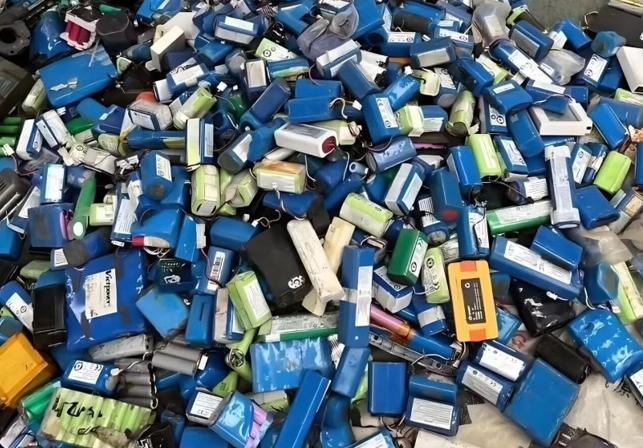
The Lithium Battery Scrapping Criteria outline essential parameters for safely disposing of batteries that have reached the end of their lifecycle. Adhering to these guidelines minimizes risks such as environmental contamination and workplace hazards. Neglecting proper disposal procedures can lead to severe consequences. For example, the lithium-ion battery recycling market, valued at $3.54 billion in 2023, is projected to grow at a 21.08% CAGR, reaching $23.96 billion by 2033. This growth highlights the urgent need for businesses to prioritize responsible battery disposal practices.
-Monitor battery health and capacity to determine replacement timing. This ensures operational continuity and avoids costly downtime.
-Follow safety protocols to prevent overheating, swelling, or fires. Regular inspections and safe disposal methods protect personnel and assets.
-Collaborate with certified recycling facilities for compliant disposal. This aligns with legal requirements and promotes environmental sustainability through material recovery.
1.1 Performance Degradation and Reduced Efficiency
Tracking performance degradation is critical to identifying when a lithium-ion battery should be retired. Metrics such as State of Health (SOH) and Capacity Fade provide insights into efficiency losses:
1.Power Fade: Reduced ability to deliver power effectively.
2.Increased Internal Resistance: Impedes charging/discharging efficiency as the battery ages.
3.Coulombic Efficiency: Ratio of charge extracted during discharge to charge input during charging.
4.Cycle Life: Number of charge-discharge cycles before capacity drops below functional thresholds.
For industrial applications (e.g., robotics, medical devices), compromised efficiency can lead to operational failures and downtime. Establishing clear scrapping criteria ensures reliability and mitigates risks.
1.2 Safety Risks: Overheating, Swelling, and Fire Hazards
Lithium-ion batteries pose significant safety risks, including thermal runaway and fires. Recent data underscores these dangers:
-Lithium battery-related fires in the UK have quadrupled over the past three years.
-Overheating incidents occur at least six times weekly in the UK.
-Since 2020, 190 injuries and 10 fatalities have been linked to lithium battery fires.
In sectors like aviation, U.S. authorities report weekly incidents involving smoke, fire, or extreme heat from batteries. Proactive scrapping criteria are vital to prevent accidents and safeguard infrastructure.
1.3 Physical Damage: Cracks, Leaks, and Corrosion
Physical damage (e.g., cracks, leaks, corrosion) is a definitive indicator for scrapping. Damaged batteries risk chemical leaks, short circuits, and explosions. For instance, New York recorded over 200 fires caused by compromised lithium-ion batteries in 2022, many leading to structural damage.
In industrial settings, regular inspections and adherence to scrapping criteria prevent operational disruptions and protect workers.
1.4 Manufacturer-Defined End-of-Life Indicators
Manufacturers often specify end-of-life metrics like SOH and Remaining Useful Life (RUL). However, real-world conditions may deviate from lab-based predictions, necessitating customized criteria. Recycling end-of-life batteries enables recovery of cobalt, nickel, and lithium—materials that are cost-effective to reclaim compared to mining. This supports circular economy goals by reducing reliance on finite resources.
2.1 Environmental and Sustainability Benefits
Recycling lithium-ion batteries reduces environmental harm by recovering materials like lithium, cobalt, and nickel. Over 96% of battery materials can be recycled, minimizing waste and lowering CO2 emissions. Advanced methods like AquaRefining demonstrate superior sustainability:
Recycling Method | CO2 Emissions (10,000 MT) | Landfill Waste (MT) |
Pyro | 42,140 | 4,500,000 |
Standard Hydro | 29,600 | 12,150,000 |
AquaRefining | 650 | <375,000 |
Adopting sustainable practices aligns businesses with global environmental goals and enhances corporate responsibility.
2.2 Compliance with Hazardous Waste Regulations
Lithium-ion batteries are classified as hazardous waste due to flammability and reactivity. Non-compliance risks fines, legal action, and reputational damage. Key regulations include:
-Universal Waste Regulations: Streamline labeling, storage, and disposal.
-Reduced Requirements for Small Generators: Simplify compliance for smaller businesses.
Regular audits ensure accountability and promote safer industry standards.
2.3 Economic Advantages of Material Recovery
Recycling offers significant cost savings:
-Recovered cathode materials reduce production costs by up to 43% compared to virgin resources.
-Hydrometallurgical methods lower global warming potential while remaining cost-effective.
The recycling industry is projected to grow from $26.28 billion in 2025 to $46.55 billion by 2032, driven by regulations and market demand. Investments in recycling programs yield long-term financial benefits, including high net present value (NPV) and reduced equivalent annual costs (EAC).
Adhering to lithium battery scrapping criteria ensures safety, compliance, and environmental stewardship. By partnering with certified recyclers and adopting sustainable practices, businesses can mitigate risks, reduce costs, and contribute to a circular economy. The rapid growth of the recycling sector underscores the urgency of responsible disposal in a resource-constrained world.
Next:CORNEX Advances Global Energy Transition with All-Scenario Innovations at Shenzhen Battery Expo